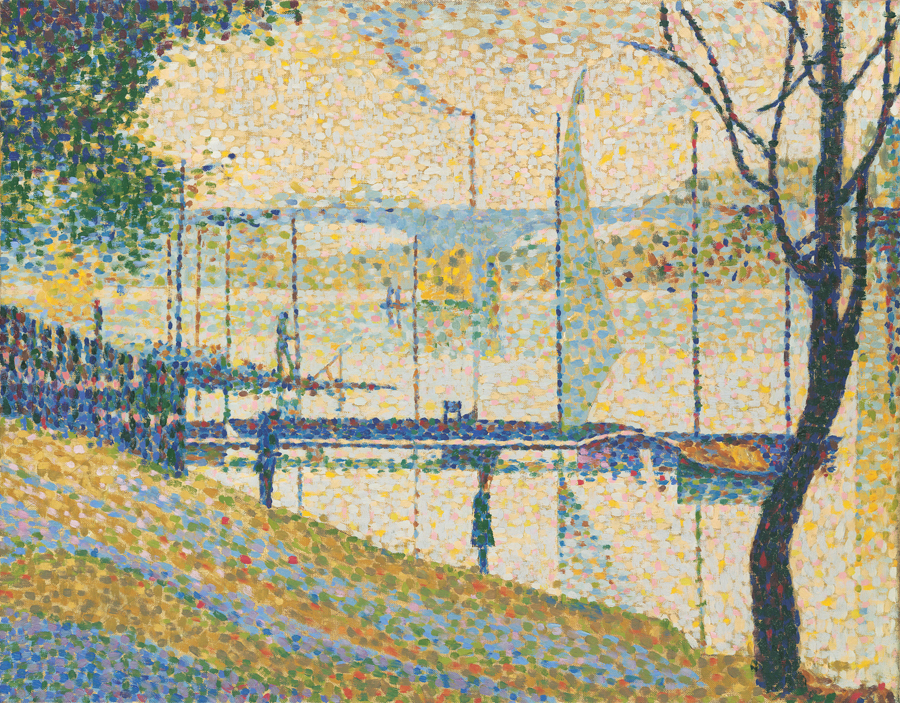Bridget Riley at Hayward Gallery Review: The Queen of Op Art Can Still Make Your Head Spin
Riley’s paintings make a strong case for embodied encounters with art: glorious advocates for the gallery space itself
Riley’s paintings make a strong case for embodied encounters with art: glorious advocates for the gallery space itself

Bridget Riley’s first big solo show was in 1971: a survey of the 40-year-old artist’s work at London’s recently opened Hayward Gallery. 48 years later, Riley has been re-ensconced for a celebratory homecoming. Truth be told, the British optical artist has been a regular returnee: there is something kindred in the spirit of gallery and artist. Creative forces formed in the post-war years, both she and the Hayward sprung into the public sphere forward facing, dynamic, fired by fresh vision and new ways of looking.

Architecturally, the broad un-pillared spaces of the Hayward are a gift to Riley, allowing for the installation of large wall paintings and for her canvases to vibrate, uncrowded, in relative isolation. Rather than an exhaustive, chronological overview, the exhibition takes an elevated swoop through the painter’s evolving concerns, clustering neat groups of paintings by common theme: curves, say, or monochromes. It is fiercely edited, building a narrative of echo and change rather than repetition. Airy and crisp, this is a very handsome exhibition.
If anything, the opening gallery verges on too airy, its double height space filled with nothing but the fine black lines of the wall painting Composition With Circles 4 (2004) and Riley’s only three-dimensional work, Continuum (1963/2005), a spiral booth painted to suggest zones of acceleration and deceleration, compression and elongation. Riley wasn’t much taken with Continuum – it was too literal an immersion in the painted field – and kept her surfaces unfurled thereafter.

Composition With Circles 4 suggests a different means of immersion, paintings of a scale such that, as with Monet’s water lily paintings at the Musée de l’Orangerie in Paris, the eyes detect no edge. Paintings that invite an ocular bathe. Her large paintings make a strong case for embodied encounters with art: they are glorious advocates for the gallery space itself. Resigning the illusion that all can be seen at once, they allow the eye to dart, now here, now there, now deep, now shallow, now leaping out beyond the surface.
Passage through the show has been left similarly open, with no set direction. Two lower galleries are devoted to Riley’s exploration of black and white, and to her paintings in which colours play, clash and mingle in arrangements of stripes and diagonals. The black and white section suggests Riley in the era of her Hayward exhibition of 1971, albeit with some recent updates. Paintings on board, Plexiglas, canvas and wall surfaces test the behaviour and possibilities of circles, squares and triangles as they flood across a plane to encounter a spatial crisis into which they must slip and then resolve themselves.

Cool as they may seem, like classical drama, Riley’s paintings pivot on the threat of crisis or discord and the possibility of harmony restored. Harmony isn’t always. Some paintings continue to emit a furious rhythm to the point where they pain the eyes. Current (1964), fine vertical waves that corrugate at the centre of the picture, hisses with static, threatening to spark if touched. Climax (1963) erupts ever upwards on a vase-shaped board that seems to bow at the centre. After all that tension, the solid black curve and line of Kiss (1961) is a soothing relief.
The show’s languid pacing and lofty scale becomes intense and intimate during a dive into Riley’s studio and biography. Drawings dating back to the artist’s school years chart a journey through adolescent self-portraiture, deft art school life studies and meticulous diagnoses of the colours performing in an interior scene. She lushes out on Bonnard’s colours, takes a line for a walk with Klee and paints an unlikely interior in the style of Matisse. During the 1950s she produces assured highly individual portraits in red chalk. Her encounter with Seurat’s pointillism comes like a thunderclap. It is through studying his paintings, analyzing and literally reproducing his methodology that Riley started working toward her own experiments in perception. Her shimmering coloured stripes carry colour as Seurat’s rolling fields do, broadcasting ‘light’, ‘autumn’ and ‘evening’ through the strategic interplay of tone.

Walls of studio studies and cartoons show that Riley’s work is preparatory: she experiments, studies, elaborates and keeps looking. The final paintings are made by assistants. Since 2000 those experiments have taken her along two distinct paths. Most recently, dot paintings in calm orange, purple and green nod back to her 1970 work Vapour. More energetically, a dramatic series of curving colour studies, sliced by patches of white, that recall the dynamism of Islamic calligraphy. The red, orange, green and grey wall work Rajasthan (2012) feels like a painting that has shattered into diagonal bands, simultaneously all curves and all straight lines. In Red with Red Triptych (2010) Riley uses the wall itself to provide bands of chilling white between triptych panels that pulse hot with red, pink and indigo. She can still make your head spin.
Bridget Riley runs at The Hayward Gallery, London, until 26 January 2020.
Main image: Bridget Riley, Rajasthan (detail), 2012, installation view. Courtesy: © the artist, David Zwirner, New York and Hayward Gallery, London























